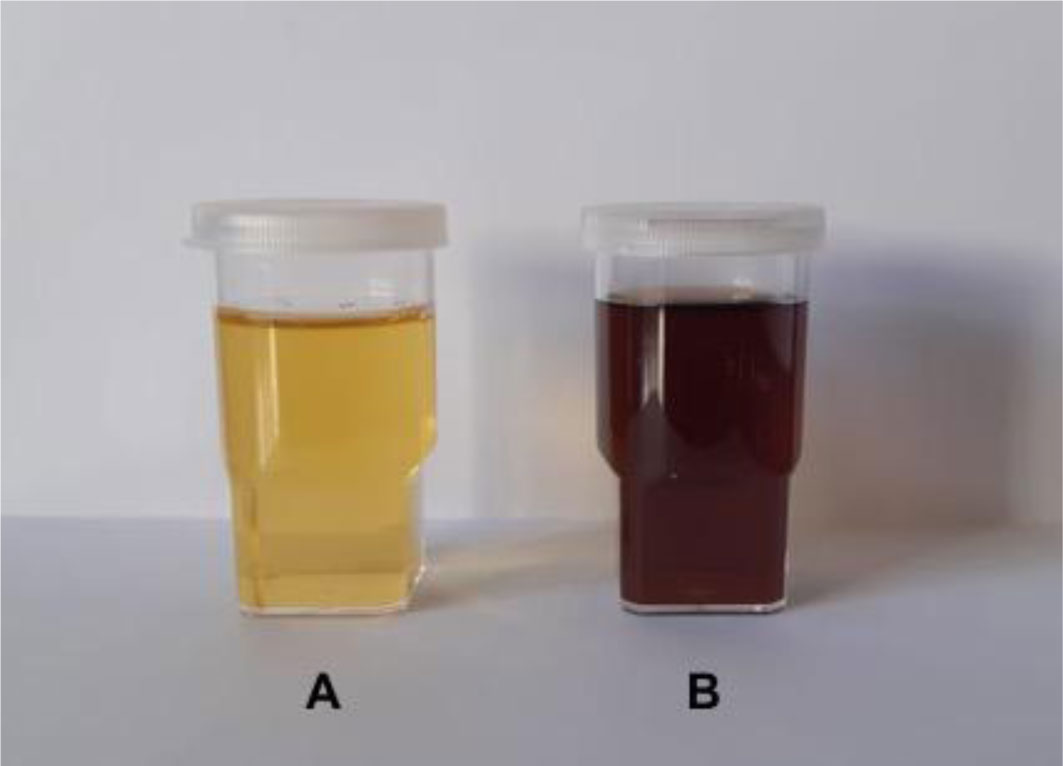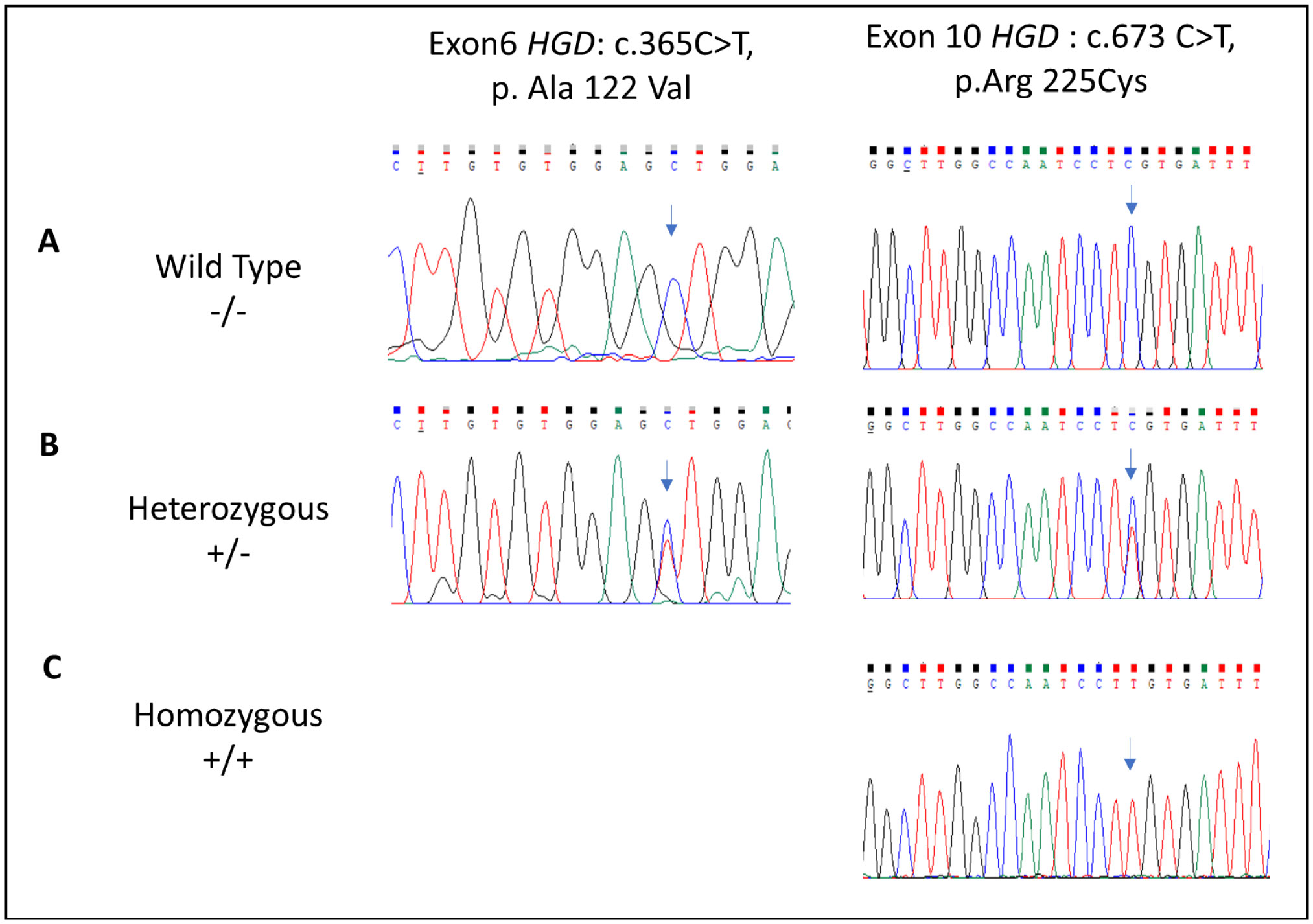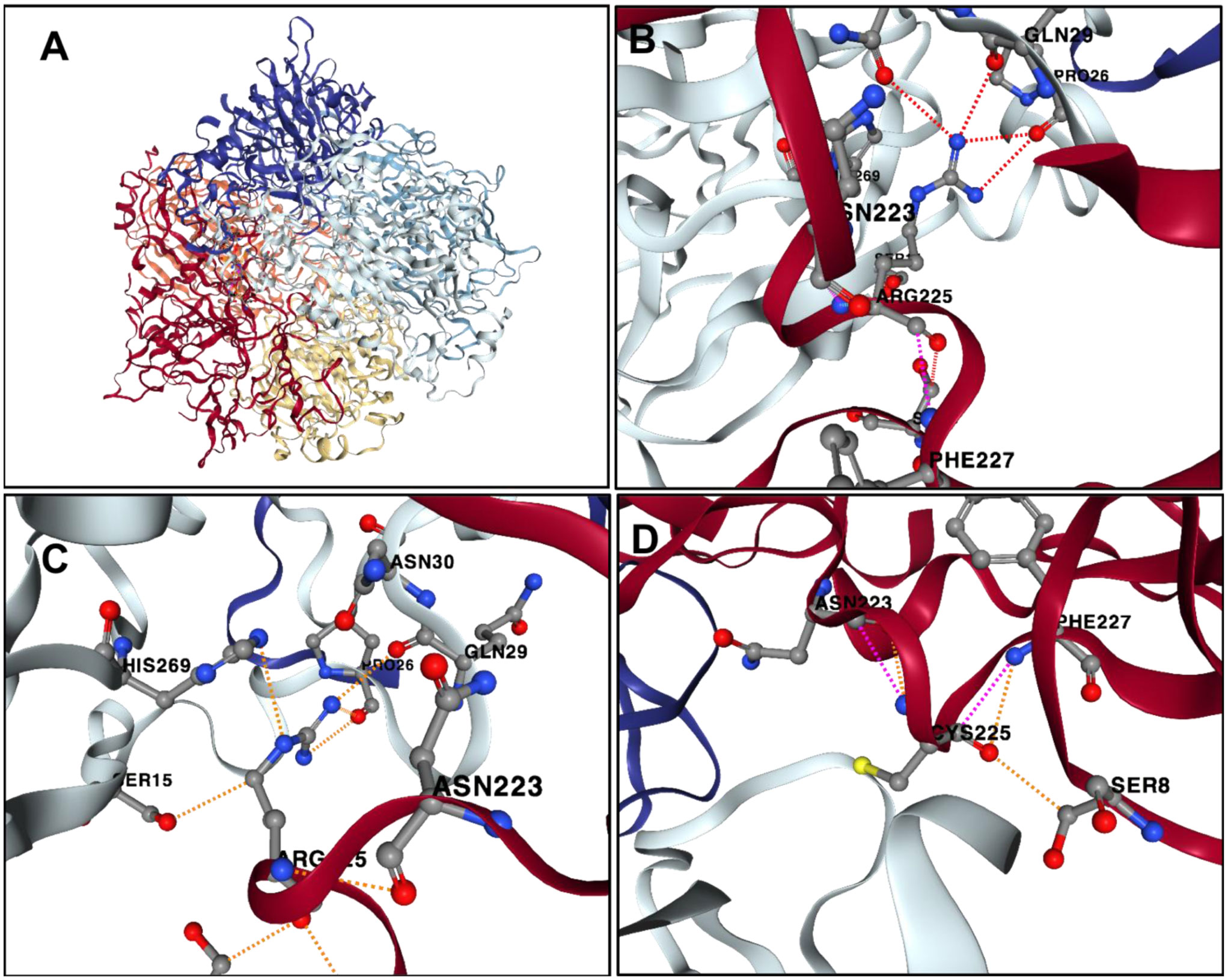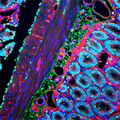1.
Introduction
Alkaptonuria (AKU, OMIM 203500 ) is a rare metabolic disease that is inherited as Mendelian autosomal recessive trait and was firstly described by Garrod [1],[2]. The global AKU prevalence rate is extremely low and was estimated as 1:250,000 live births [3]. However, the incidence rate is higher in certain regions such as Jordan, India, Slovakia and the Dominican Republic [4]. AKU is resulting from a defect in homogentisate 1,2-dioxygenase (HGD) enzyme (EC 1.13.11.5) which is involved in the catabolic pathway of phenylalanine and tyrosine amino acids [5]. Consequently, homogentisic acid is generated as an intermediary product and released to the circulation. A portion of the circulating homogentisic acid is excreted in the urine which turns black in colour on standing or upon alkalinisation [6]. The residual portion of homogentisic acid in bloodstream will be distributed to various connective tissues and deposited mainly in cartilages, tendons and ligaments as ochronotic pigment after oxidation and polymerization reactions [7],[8]. The gene encoding for HGD enzyme is located on the human chromosome 3 at q21–q23 and it is expressed particularly in hepatic and renal cells [9],[10]. HGD gene consists of 14 exons with transcript length of 1674 nucleotides (NCBI Reference Sequence: NM_000187.4) that encode for 445-amino acids protein.
The initial clinical manifestations of AKU are homogentisic aciduria, ochronosis and arthropathy of large joints such as knees and hips [11]. At advanced stage of the disease, AKU patients presented with additional clinical features including Achilles tendon rupture, arthroplasty, aortic valve disease and stones formation commonly renal and prostatic ones [12]. However, the severity of the disease varies between AKU patients but it increases with age due to the ongoing accumulation of the homogentisic acid in various body tissues and fluids [13]. Therefore, individual AKU patients may not have similar signs and symptoms even between the same family siblings [14]. Taylor et al. (2011) showed that joint tissues are prone to pigmentation only after the incidence of focal cellular and extracellular matrix changes [15]. Moreover, the authors revealed that there is a spectrum of pigmentation in articular cartilages in which HGA-derived pigment is initially deposited at the boundaries of subchondral bone and calcified cartilages and ended with complete pigmentation of cartilage matrix at more advanced ochronosis [15]. Various radiographic and imaging techniques such as MRI and CT-scan are widely used to determine the extent of and severity of joints and spinal damage [3]. Moreover, the quality of life rather than the life span is strictly affected, mainly as a result of alteration of mechanical properties of large joints as well as degenerative changes and calcifications of spinal intervertebral discs [16].
The disease is primarily diagnosed by measuring the level of homogentisic acid in blood and urine samples using gas chromatography-mass spectrometry analysis (GC-MS) [17]. Differential diagnosis is mandatory because the spinal and joints symptoms of different disorders such as osteoarthritis, rheumatoid arthritis and ankylosing spondylitis are similar to those associated with AKU [18],[19]. The clinical trials SONIA 1 and SONIA 2 approved the efficacy and safety of nitisinone as a therapy for AKU [20],[21]. Nitisinone has a role in delaying the disease progression through blocking of homogentisic acid formation and subsequent accumulation in tissues [22],[23]. Corneal keratopathy secondary to hypertyrosinemia is an eye pathology reported in some AKU patients who are receiving nitisinone therapy, a major adverse effect which can be reversed by dose reduction and diet restriction [24]. However, the lifestyle of AKU patients must be adjusted to slow and manage the symptoms of the disease [14]. In addition, regulating nutritional habits to lower protein intake significantly reduces the level of circulating tyrosine and a subsequent reduction in homogentisic acid was also observed [25].
AKU patients are either homozygous or compound heterozygous for the various identified variants of the HGD gene [26],[27]. In addition to DNA sequencing technique, multiplex ligation-dependent probe amplification (MLPA) analysis can also be used for detection of AKU mutations because of the recent discovery of numerous large-scale deletions in AKU [13]. The HGD mutation database was constructed in 2010 and so far a list of 213 unique DNA variants has been reported among AKU patients worldwide [28]. Remarkably, HGD mutations in the Arab populations are rarely reported [29],[30]. In Jordanian society, only two reports were published despite the high prevalence of the disease and the identification of more than 40 cases in south Jordan [31],[32]. The aim of the present study is to investigate pathogenic variants among members of single Jordanian family diagnosed with AKU. As a consequence, our results identified a novel HGD mutation in addition to the common A122V variant. The novel mutation occurring in exon 10 has not been listed yet in the HGD mutation database and other databases including: AKU database, ClinVar, HGMD and ApreciseKUre. To the best of our knowledge this is the first study to publish this unique mutation globally.
2.
Materials and methods
2.1. Sample collection and genomic DNA extraction
The study was conducted during the period of September 2019 to June 2020. Peripheral blood and urine samples were collected from Jordanian AKU family members (n = 23). There was no consanguinity relationship between the parents enrolled in the current study except the mother II:8 and the father II:9 who are first degree cousins as depicted in the family pedigree (Figure 1). To investigate HGD variants among participants, genomic DNA was extracted from whole blood using Quick-gDNA Miniprep Kit (Zymo Research, USA) according to the manufacturer's instructions. Briefly, the procedure started with the mixing of 100 µl of whole blood with 400 µl of Genomic Lysis Buffer (4:1) in a 1.5 ml micro centrifuge tube. Then, the sample was incubated for 10 minutes at room temperature. The lysate was transferred to Zymo-Spin column in a collection tube and centrifuged at 10,000× g for 1 minute. After centrifugation, 200 µl DNA Pre-Wash Buffer was added to the spin column and then re-centrifuged at 10,000× g for 1 minute. Finally, 500 µl of g-DNA Wash Buffer was added to the spin column and centrifuged at 10,000× g for 1 minute. The DNA was eluted from the column using 100 µl of elution buffer.
The quantity and quality (260/280 and 260/230) of the extracted DNA were measured by NanoDrop 2000 spectrophotometer (Thermo Fisher Scientific, USA). The extracted DNA was stored at −20°C until analysis.
2.2. Diagnosis of AKU patients
AKU patients were diagnosed based on family history, clinical examination and routine analysis for homogentisic aciduria using ferric chloride solution or by overnight standing of urine as illustrated in Figure 2. Presence of homogentisic acid was additionally confirmed by measuring urinary homogentisic acid level using GC-MS analysis. Written informed consents were obtained from all participants prior to inclusion in the study. The study protocol was approved by the Committee of Research Ethics in Mutah University, Jordan (Certificate of approval No. 201957; approval date September 18, 2019). All followed procedures were in accordance with the Declaration of Helsinki and its contemporary amendments.
2.3. PCR amplifications of HGD exons and sanger sequencing
The 14 exons of the human HGD gene for the proband III:1 were amplified from the extracted genomic DNA using the specific primers listed in Table 1. This was followed by a segregation analysis for exon 6 and exon 10 for all participated members (Figure 1). The primers pair of each exon was designed to include the flanking intronic regions containing the splice sites sequences using Primer3 (v. 0.4.0) online tool [33],[34]. The primers were purchased from Macrogen, South Korea. PCR reaction was prepared according to the standard protocol using Phusion High-Fidelity PCR Master Mix (Thermo Fisher, USA), 300 nM of each of the forward and reverse primers and 100 ng of genomic DNA. PCR reactions were executed under the standard programme with specific annealing temperature for each primer pair (the range was between 52–60°C).
An initial denaturation for 30 sec at 98°C, followed by 35 cycles of 10 sec denaturation at 98°C, annealing for 30 sec at 52–60°C, extension for 30 sec at 72°C followed by the final extension step at 72°C for 7 min. PCR products were separated on 2% agarose gel electrophoresis and then purified with ExoSAP-IT PCR Product Cleanup Reagent (Applied biosystems, USA) according to the manufacturer's instructions. Briefly, 5 µL of a post-PCR reaction product was mixed with 2 µL of ExoSAP-IT reagent. The mix were then incubated at 37°C for 15 minutes to degrade remaining primers and nucleotides followed by another incubation at 80°C for 15 minutes to inactivate ExoSAP-IT reagent. PCR purified fragments were sequenced from both directions using the BigDye terminator V3.1 Cycle Sequencing kit (Applied Biosystems, USA) and the ABI 3730xl gene analyser at Macrogen Inc, South Korea. Segregation analysis for the candidate variants was then performed for all participated members from the enrolled family.
2.4. Analysis of sequenced data
The sequence data were analysed with Chromas Pro software (Technolysium LTD, South Brisbane, Australia). The effects of missense variants identified in the coding regions were predicted using in silico tools: PolyPhen2, SIFT and Mutation taster. Variants occurring with a frequency of ≥1% were classified as benign. The identified variants were queried in the HGD mutation database, AKU database, ClinVar, Human Gene Mutation Database (HGMD) and ApreciseKUre database.
3.
Results
Jordanian family with total number of 23 individuals (10 males and 13 females) participated in the current study. The sociodemographic characteristics of the participants are shown in Table 2. The proband III:1 was diagnosed with AKU when he was 11 years old. The proband's mother confirmed the existence of the black urine phenomenon since childhood and the brownish-black colour of the nappies drove her attention to seek medical advice. The proband III:1 was not diagnosed as AKU patient until 2010 after a visit to a local paediatrician. Subsequently, his sister III:4 who also showed the black urine sign was diagnosed with AKU. Additionally, two AKU patients (III:8 and III:9) who are cousins of the proband were diagnosed with the disease during the screening of the proband family members and relatives. Genomic DNA was extracted from whole blood samples of all participants to identify healthy from carriers since carriers are asymptomatic. The relationship between the family members is illustrated in the pedigree shown in Figure 1.
The PCR amplification of the 14 exons was performed for genotyping of the proband III:1. The analysis of exons sequences revealed the existence of two different pathogenic mutations in exons 6 and 10 and subsequent identification of different HGD alleles as shown in Figure 3.
The fathers I:1 and I:3 have two normal alleles whereas the mother I:2 was heterozygous with one normal allele assigned as HGDNr and a mutated allele, carrying the conservative missense variant A122V, denoted as HGDA122V within exon 6, c.365C>T transition mutation. This mutation is recurrent and has been reported before in the HGD mutation database and was classified as pathogenic mutation with hexamer disruption effect on HGD protein [3],[27]. On the other hand, the mutated allele found in the carrier members I:4 and I:5 from the first generation showed different pathogenic missense mutation located in exon 10 (c.673 C>T, p.R225C). Subsequently, this allele was assigned as HGDR225C. Segregation analysis of participated members from the second generation (II: 1–9) revealed that II:2, II:3, II:6 and II:7 were wild-type (WT) and healthy, II:1 & II:4 were carrier for the HGDA122V mutation and II:5, II:8 and II:9 were carriers for the HGDR225C mutation as they inherited the corresponding maternal mutated allele and the paternal normal allele. To investigate for segregation of the previous two mutated alleles (HGDA122V and HGDR225C), we genotyped all participated siblings from the third generation. Mutational analysis revealed that III:1 and III:4 were compound heterozygous as they inherited the mutated alleles from their corresponding parent and denoted as HGDA122V/HGDR225C. The daughter III:5 did not show the phenotype of AKU but genotyping analysis demonstrated that she was AKU carrier with heterozygous pattern (HGDNr/HGDR225C) as she inherited the mutated variant from her mother and the normal allele from her father. The distribution of different alleles in progeny is shown in Figure 1. On the other hand, the sibling III:8 and III:9 were HGDR225C homozygous. The chromatograms of the alleles are illustrated in Figure 3. Sanger sequencing determined that variants are fully segregated with the disease in affected family members. This segregation mode is in agreement with the autosomal recessive pattern of AKU inheritance which is strongly suggesting that these missense mutations are pathogenic. Moreover, the two missense variants (c.365C>T, p.Ala122Val and c.673 C>T, p.Arg 225Cys) were detected with allele frequency of 0.005569% and 0.001196% respectively in the gnomAD database. Both variants were identified to be deleterious, probably damaging and disease causing in SIFT, PolyPhen2 and Mutation taster, respectively as shown in Table 3.
4.
Discussion
AKU is a degenerative disease and several studies showed that it is resulted due to structural rather than regulatory gene mutation [27],[35]. The signs and symptoms of the diseases are mainly caused by the accumulation of homogentisic acid in tissues instead of its conversion into maleylacetoacetic acid leading to the deposition of ochronotic dark pigment in connective tissues particularly the skin, sclera of the eye, cardiac valves, spine and large joints cartilages [27]. In the study performed on large cohort of AKU patients, Ascher et al. reported that there is no phenotype-genotype correlation between the severity of the disease and the type of HGD variant [27]. Numerous variants of the HGD gene have been reported and listed in the HGD mutation database and AKU database. Therefore, this disorder displays an outstanding allelic heterogeneity [7],[28]. The genetic analysis of DNA extracted from diagnosed AKU patients showed that the disease is presented either as homozygous or compound heterozygous pattern of the different pathogenic variants of the HGD gene [27],[28].
Middle East and Arab countries including Jordan are regions known with high rate of consanguinity and endogamy due to cultural, ethnical, socioeconomic and historical reasons [36]. A study conducted in Jordan demonstrated that there is a strong association between consanguinity and autosomal recessive diseases due to increased level of homozygosity between offspring of consanguineous matings [37]. Our study was conducted in a small village in south Jordan known with high rate of marriages between relatives or within one's own tribe or community. Consequently, families are genetically isolated and share at least one common ancestor. This will help in highlighting specific conditions related to AKU disease at the molecular level and identifying allelic variants directly implicated in the lack of HGD enzyme functionality.
Titus et al. (2000) showed that the HGD protomer consists of a 280 amino acids N-terminal domain and a 140 amino acids C-terminal domain [38]. Additionally, the authors revealed that the HGD protomer associates as a hexamer arranged as a dimer of trimers to form the functional HGD enzyme [38]. Homogentisic acid is a substrate of this enzyme and it binds the catalytic site at Glu 341, His335 and His371 amino acids in presence of the cofactor Fe2+ [10]. The activity of this enzyme is highly affected by mutations in the HGD sequence. Actually, the complex structure of the protein can be disrupted in numerous and different ways depending on the type of mutation. Some of the mutations specifically affect the stability of the protomer itself (protomer destabilization) such as G205V and A267V variants while others interfere with the catalytic side (active site disruption) such as R330S and P332R variants or can affect the hexamer assembly (hexamer disruption) such as G152R and G185R variants [27],[39]. In the study of Bernini et al., the authors suggested a new strategy for the treatment of AKU through the targeting of the defective HGD enzyme by pharmacological chaperones which can restore the structural stability of the native HGD enzyme disrupted by the various missense mutations [40]. These chaperones are able to rescue the activity and functionality of the HGD enzyme partially or completely so considered as promising AKU treatment [40].
In our study we identified a novel missense mutation R225C in addition to the founder missense mutation A122V which was previously reported in Jordanian AKU patients [32]. The proband III:1 in this study and his sister III:4 were found compound heterozygous carrying the novel mutation from their mother and the recurrent mutation from their father. Further analysis of the variants in their relatives revealed that their cousins were homozygous for the novel mutation. The proband's cousins are generated from first degree consanguineous mating and the parents who are AKU carriers inherited the novel mutation from their maternal grandmother. Our results clearly demonstrate that the mother and the father of the proband do not share common ancestor because they inherited two different alleles from their corresponding maternal grandmothers. Indeed, the presence of two variants indicates that there are two independent founders implicated in the prevalence of AKU in Jordan.
A122V is relatively common AKU mutation which is present in AKU chromosomes from different geographical regions [3],[41]. Phornphutkul et al. (2002) reported the mutation of A122V in addition to 23 novel variants found in the study conducted on 58 AKU patients [3]. Molecular dynamics simulation and functional analysis showed that the common A122V variant exerts a negative impact on the HGD enzyme function through a disruption effect on the hexamer [27]. We analysed the effect of the novel R225C mutation on the structure of the HGD protein complex using the computational tool mSCM-PPI2. We found that the reported mutation causes destabilization of the hexamer due to disruption of protomer-protomer interactions as illustrated in Figure 4. The analysis showed that there was a decrease in binding affinity by a factor close to 1 kcal/mol (ΔΔGAffinity = −0.98 kcal/mol) highlighting the vital role of the wild-type residue.
Interestingly, the amino acid arginine at position 225 (Figure 5) appears remarkable and different studies reported the substitution of arginine (R) with other amino acids such as histidine (c. 674G>A) [42], leucine (c. 674G>T) [3], proline (c. 674G>C) [39] or cysteine (c.673 C>T) as detected in our study.
Additionally, the novel mutation was not found in coincidence in the same haplotype with the second HGD mutation A122V which strongly suggests that the novel variant does not represent a frequent polymorphism. However, Usher et al. (2015) showed that the mutation at position 225 in the protein reduces the hexamer stability because arginine at 225 in wild-type protein is located at the interface between protomers and it is involved in intermolecular interactions [39]. Consequently, any alteration at this position is expected to disrupt theses intermolecular interactions and the subsequent destabilisation of the hexamer [39]. Furthermore, the investigation of the effect of the novel AKU-associated mutation on the enzyme structure and function and the evaluation of its potential pathogenicity using different prediction tools specifically designed for interpretation of missense variants confirmed that the previously unreported AKU variant at exon 10 is pathogenic rather than benign polymorphism. This novel mutation is going to be submitted to HGD mutation database.
5.
Conclusions
The current study provides insight on AKU alleles present in the members of the third generation of an AKU family from south of Jordan. In summary, our study bares a novel missense pathogenic variant R225C in addition to the recurrent mutation A122V in HGD gene among Jordanian AKU family members. Since Jordan is a country with high rate of consanguineous marriages, there is a need to start a national screening project including different areas of Jordan to diagnose more AKU patients. Our plan in the future is to do genetic analysis study on larger cohort as other pathogenic variants of the HGD may be detected among Jordanian AKU patients. Moreover, and in term of prevention of recurrent occurrence of the identified pathogenic variants, testing for at-risk relatives and prenatal molecular diagnosis for pregnancies at increased risk are recommended.
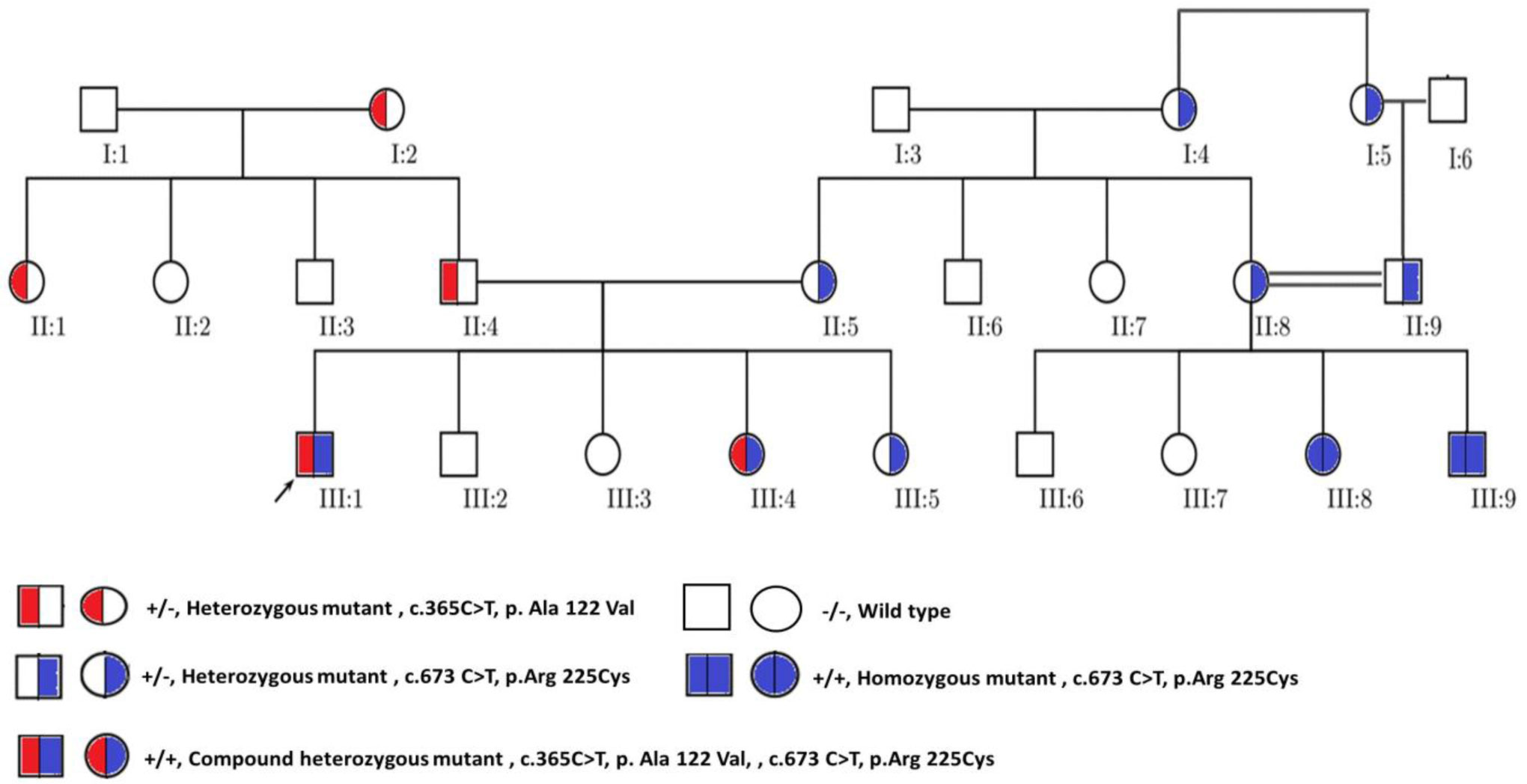









 DownLoad:
DownLoad:
